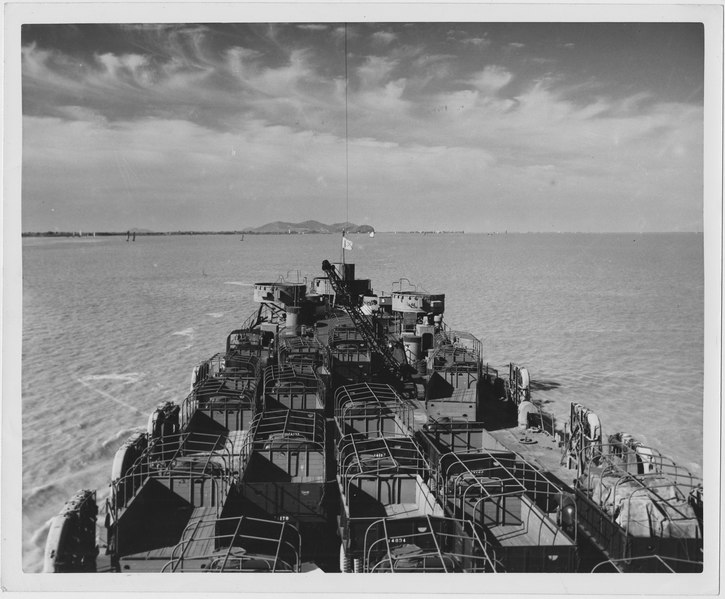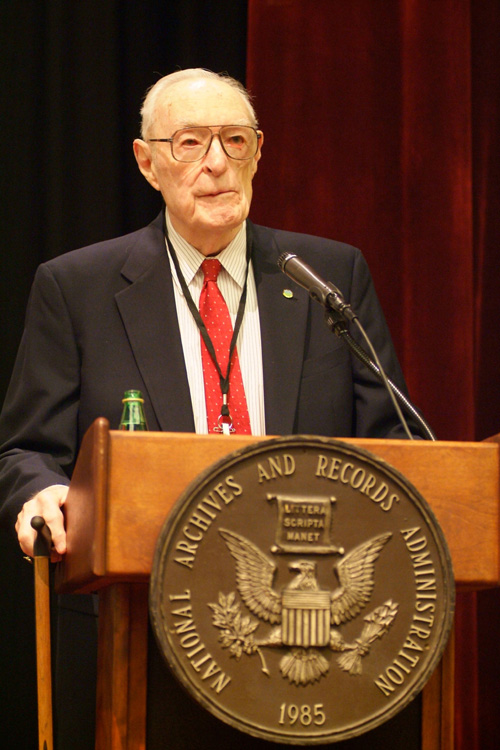Shanghai, 1945: International Humanitarian Aid in Post-war China
On 8 November 1945, three months after Japan’s surrender in the Pacific War, the first shipment of supplies to China provided by the United Nations Relief and Rehabilitation Administration (UNRRA), an international organization established in November 1943 to plan and coordinate relief for victims of the Second World War in areas liberated from Axis control, arrived at the port of Shanghai. In this immediate post-war moment, a variety of political and economic crises faced the Nationalist Government of China,which had ruled this country since 1912 after the collapse of Qing Empire, including the challenge from the Chinese Communist Party in Northern China, high inflation, let along more than 80 million Chinese refugees to be repatriated and many of whom lived on the verge of starvation. The history of UNRRA in China (1944–1947) is best understood as a process by which the Chinese Government actively incorporated an unprecedented scale of international aid into itsnational plan of recovery than about the introduction of western humanitarianism to a non-European country understood only as a passive recipient. At Shanghai, the Nationalist Government received most of UNRRA’s aid and then distributedit onwards to the war-devastated population in Central and Southern China along the Yangtze River. Shanghai functioned not only as a crucial port for receiving and distributing supplies, but also as a coordinating headquarter for China’s post-war recovery. At the end of 1945, the Headquarters of the UNRRA China Office, and that of its Chinese national counterpart, the Chinese National Relief and Rehabilitation Administration (CNRRA), moved from the wartime capital, Chongqing, to Shanghai, which had become one of the most internationalized cities of China since it was opened to foreign trade in 1843.
By exploring UNRRA’s operations in Europe, historians like Jessica Reinisch have shown that the creation of the UNRRA initially combined European and American internationalism in relief and intentions for the leadership in the post-war world order. Surprisingly, China has been overlooked in the global history of recovery after the Second World War, even though China was the recipient of UNRRA’s largest investment of any single country and the only non-Western sovereign state in UNRRA’s Four-power Central Committee, alongside with the United States, Great Britain, and the Soviet Union. No previous western humanitarian programme in China reached such a national scale through a variety of initiatives as UNRRA did in its short three-year operating period. This included US$535 million of supplies and over 1,000 international relief experts. Geographically, UNRRA’s China Programme covered the whole area occupied by the Japanese military where over 200 million Chinese lived, fromthe rich Pearl River Delta in Southern China to the Yellow River across the inland provinces. UNRRA’s vast distribution to China, a non-Western sovereign state which actually had a strong anti-imperialist presence globally, turned out to be a crucial moment in the shifting landscape of global humanitarianism which gradually involved American-led post-colonial development projects.

Unlike in Europe, the United States played a more important role in making the UNRRA China Programme than any other foreign state. All the three chiefs of the UNRRA China Office were American, so were the heads of the UNRRA Far Eastern Office. The contemporary Chinese to a large extent understood UNRRA’s project in China as an extension of the Allied, notably American, military relief to China. Consequently, the UNRRA China Office did not regard itself as a typical humanitarian organization, like the Chinese Red Cross Society, but as an international civil service in relief and rehabilitation. UNRRA recruited foreign staff from a wide range of backgrounds, including new-comers to China and ‘old China hands’ like Harry B. Price who had been born and had lived the major part of his life in China. These 'old China hands' built a bridge between international relief experts who had never engaged with Chinese affairs and the local bureaucratic system.
This American-led international humanitarian aid had to confront the Chinese Government’s ideas on post-war recovery. For the Nationalists, post-war reconstruction referred to more than only restoring the pre-war status quo. It also meant adapting its efforts to modernize the nation to post-war international politics. The term “reconstruction” stood at the core of a series of national schemes that had incorporated individual initiatives into governmental projects in the 1930s, such as the Rural Reconstruction Movement. The eight-year war against Japan certainly setback the process of nation-building. From the start of the war, as Rana Mitter has argued, the Nationalistshad seen the provision of the Allied wartime relief asa means of creating a stronger, more united national body. By establishing a national relief agency in January 1945, the Chinese National Relief and Rehabilitation Administration (CNRRA), the Nationalist Government attempted not only to simply distribute UNRRA supplies to the individual refugees, but also to incorporate them into its own long-term plan of state-building. To fulfil this task, CNRRA assumed further responsibilities like cooperatingwith other state and non-state agencies on relief and rehabilitation in China, taking over both military and civil resources from the previous Japanese collaborationist regime. Accordingly, the UNRRA China Office served more as a coordinating and advising agency than an executive one.
Nevertheless, post-war Nationalist China was still poor. This war-devastated country, troubled by domestic and international crises, urgently required aid. The leader of the Nationalist Government, Chiang Kai-shek, who had been recognized by all the Chinese as theonly military leader in the war against Japan (1937-1945), attempted to restore his party’s legitimacy of ruling China after having carried out controversial military orders sacrificing the civilians such as the order of breaking the Yellow River dike in 1938 to resist Japanese armies without giving warning to civilians. With the provision of UNRRA supplies and the assistance of UNRRA experts, the Nationalist Government successfully returned the Yellow River to its pre-war course in spring 1947. Such national project of recovery with international humanitarian aid also rendered the Nationalist Government a chance to show the Western society the professionalization of its officials and care for its people, thereby to gain further international practical support. It became increasingly important to the Nationalist Government as the Chinese Communist Party grew in influence and received much international sympathy in the last year of the Sino-Japanese War.

The short history of international humanitarian aid in China has long been overlooked in Eurocentric histories of global reconstruction after the Second World War as well as within nationally-focussed Chinese historical narratives centred on the Chinese Civil War (1946-1949). So too has current research on the UNRRA been Western-centric, concentrating on theEuropean experience. Meanwhile, the conventional history of China in the 1940s constructs anarrative of successive military conflicts, leaving little space for the international history of relief and rehabilitation. Yet, as recent work has begun to uncover, understanding the UNRRA’s operations in China is important because it broadens our understanding of this global undertaking shaped by non-European local governments and conditions. In this case, the international community shared the burden and challenges of post-war relief and rehabilitation with the Nationalist Government of China in the 1940s. The study of the UNRRA in China further sheds light on the continuities and discontinuities of the history of humanitarianism through the interplay of the Chinese and international actors at the immediate moment after the Second World War.
Further Reading
- Bickers, Robert. Out of China: How the Chinese Ended the Era of Western Domination(London: Allen Lane, 2017).
- Kirby, William C. ‘Engineering China: Birth of the Developmental State, 1928-1937’. In Becoming Chinese: Passages to Modernity and Beyond, edited by Yeh, Wen-hsin (Berkeley: University of California Press, 2000): pp. 137-160.
- Mitter, Rana. ‘Imperialism, Transnationalism, and the Reconstruction of Post-War China: UNRRA in China, 1944–7’. Past & Present 218, suppl. 8 (2013): pp. 51-69.
- Ray, Franklin J. UNRRA in China: A Case Study of the Interplay of Interests in a Program of International Aid to an Undeveloped Country (New York: Institute of Pacific Relations, 1947).
- Reinisch, Jessica. ‘Internationalism in Relief: The Birth (and Death) of UNRRA’. Past & Present 210, suppl. 6 (2011): 258-289.
- Schoppa, Keith R. In a Sea of Bitterness: Refugees During the Sino-Japanese War(Cambridge, Mass: Harvard University Press, 2011).
Short Biographical Note on Contributor
Jiayi Tao is a PhD student in the Department of History at the University of Bristol. She completed a BA in History at Shanghai Jiao Tong University, and an MA in History at the University of Bristol. Her PhD research focuses on post-war relief and rehabilitation in China(1943–1949) carried out by the transnational humanitarian organizations, notably UNRRA, and Chinese state and non-government actors. Jiayi was a participant of the Global Humanitarianism Research Academy 2018.
